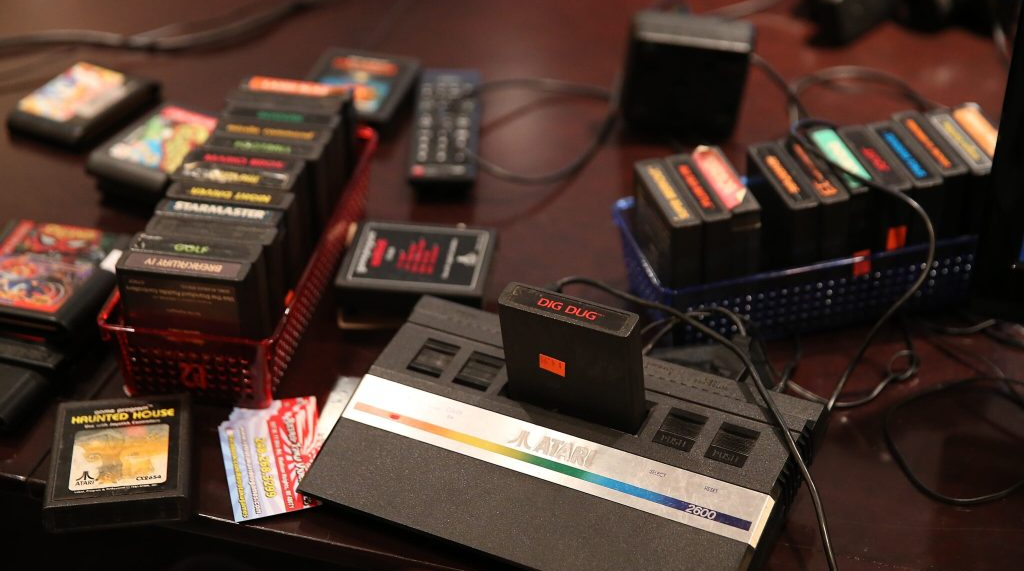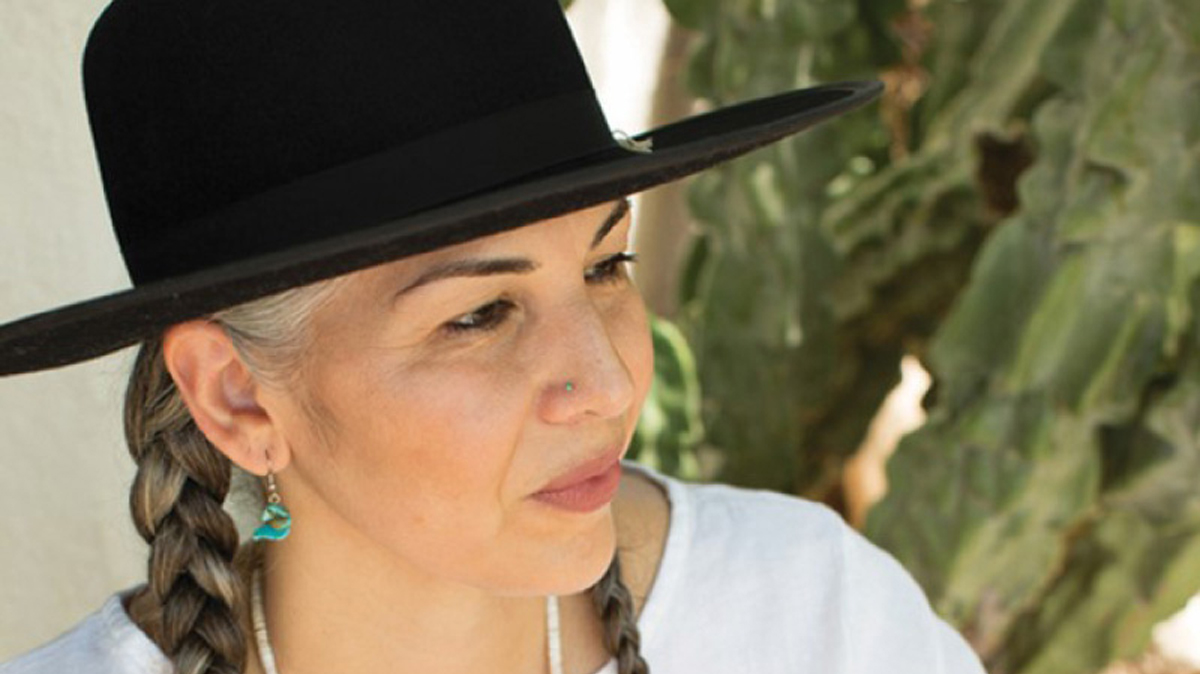It’s International Games Month (IGM)! Celebrated annually in November, IGM is an initiative that hopes to reconnect communities through their libraries around the educational, recreational, and social value of games of all kinds of games, from fantasy adventures like Dungeons & Dragons and online roleplaying games to tried-and-true board games.
We love videogames here at I Love Libraries—especially the first generation of home videogaming systems and their games. Atari, ColecoVision, Intellivision, Nintendo, Sega … Pong, Pitfall, Castlevania, Contra. Unfortunately, many of these systems and their games were discontinued decades ago and have become difficult to find, much less in working order. Thankfully, libraries, institutions, and archivists have stepped in to archive and preserve this essential element of gaming and pop culture history.
Launched in January 2025, the Video Game History Foundation (VGHF) is a non-profit organization dedicated to preserving, celebrating, and teaching the history of video games. According to its website, VGHF “believe(s) in pursuing a world where people are inspired to discover and celebrate the stories of video game history [by] bridging the gaps between video game fans, historians, academics, institutions, collectors, and the industry.”
One of VGHF’s missions is to build the first dedicated research library for the study of video game history, with near-complete sets of most North American video game magazines going back to the late 1970s, as well as international publications, foreign language magazines, history and art books, and a wide range of rare historical material.
VGHF is also actively collecting and preserving historical source code and assets, including development tools, raw art, and documentation. In some cases, they’ve even used these collections to bring lost games back to life.
Many items in VGHF’s collection can be found in its online library, the VGHF Digital Archive. The portal allows access to VGHF’s digital collections, as well as the full text of documents, magazines, transcripts, and more.
You can learn more the amazing work being done at VGHF at its blog. Recent posts include deep-dives into video game source code to demonstrate how games were built, the unveiling of a legendary game thought to be lost, the archaeological reconstruction of a game from 30-year-old materials, and an analysis of design trends in video game marketing from the 1960s.
The video below has even more details about VGHF.
The Library of Congress (LC) is one of the most notable institutions working to collect, catalog, and preserve videogames.
At its Packard Campus for Audio-Visual Conservation in Culpeper, Virginia, LC has more than 4,000 videogame cartridges and CD-ROMs amongst more than 1.1 million film, television, and video items, and almost 3.5 million sound recordings. LC also has a robust collection of thousands of videogame strategy guides and gaming periodicals.
LC has many of the usual suspects one would expect in a videogame collection, but also many rare and unusual outliers.
“One of the games I am particularly interested in from the educational collection is a game called Chop Suey which was designed by artist Theresa Duncan and features voice over narration from David Sedaris, long before he became a bestselling author and NPR staple,” said David Gibson, a moving image technician at LC and the collection’s steward. “The game was marketed to girls as an alternative to the violent titles that have always proliferated in the gaming market, but it does not talk down to anyone and in some ways plays like a mid-90s independent film. It’s just one of the unique and interesting titles that you don’t hear much about but that could potentially be a fascinating topic of study for some future researcher.”
The game canon
LC’s dedication to video games also led to its involvement-along with Henry Lowood at Stanford University-in the 2007 creation of the game canon: a list of video games to be considered for preservation by the library. Game canon is modeled on the efforts of the National Film Preservation Board, which produces an annual list of films that are subsequently added to the National Film Registry, also managed by LC.
Lowood was instrumental in the canon’s creation. From Video Game Canon:
“Lowood has served as the curator of the History of Science and Technology Collections at Stanford University since 1983. Thanks to this role, he’s been part of the growing field of Game Studies practically since its very beginning, and in 2006 he used his position to pitch a proposal to the Library of Congress about the importance of the academic study of games.
“Partly inspired by the National Film Preservation Board’s National Film Registry and his own efforts to preserve important game-related artifacts since 1998, Lowood asked for [LC’s] assistance in creating a “Game Canon,” a group of titles that would best represent the cultural and historical significance of video games. He got his wish a year later, and a committee … was formed to decide on the canon’s initial composition.”
The canon includes:
- Spacewar!, a 1962 space combat video game
- Star Raiders, a 1980 space combat video game
- Zork, a 1977 text-based adventure game video game
- Tetris, a 1985 puzzle video game
- SimCity, a 1989 a city-building simulation video game
- Super Mario Bros. 3, a 1988 platform game
- Civilization I/II, a 1991 (1996 for Civ II) turn-based strategy 4X video game
- Doom, a 1993 first-person shooter
- Warcraft series, a series of real-time strategy game that began in 1994
- Sensible World of Soccer, a 1994 football video game
The video game canon has been updated and added to since its 2007 creation, but further work on preserving the canon by LC has yet to begin. Despite that delay, the canon has evolved to also become a statistical meta-analysis of 80 Best Games lists that were published between 1985 and 2025.
To qualify for inclusion, each list must include at least 50 titles, some form of editorial oversight (lists made up solely of reader polls or fan voting were excluded), and no restrictions on release dates or platforms. The evolution of the canon has led it to expand to 1000 titles, with some absolute classics occupying the top five spots.
- Tetris (1988)
- Resident Evil 4 (2005)
- The Last of Us (2013)
- Half-Life 2 (2004)
- The Legend of Zelda: Breath of the Wild (2017)
The creation of the canon is “an assertion that digital games have a cultural significance and a historical significance,” Lowood told The New York Times.
How you can support libraries
With library funding being gutted and censorship on the rise, supporting libraries is more critical than ever. If you’re looking for a way to help, we urge you to become a Supporter of the American Library Association by donating.
At the American Library Association, we are here to protect libraries — today and for generations to come. What does your donation do? It helps a neighbor gain skills to start a business. It helps a child discover themselves through books and programs. And it helps keep libraries strong, open, and free for everyone.
Become a Supporter
Subscribe to the I Love Libraries newsletter! You’ll get news from the library world, advocacy updates, author interviews, book lists, and more delivered to your inbox every month.




